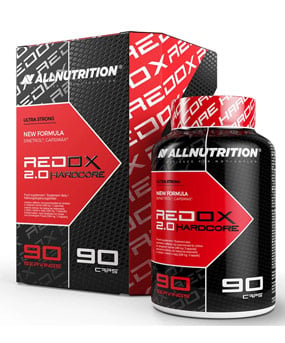Ma postać białego proszku, jest rozpuszczalna w wodzie, jej temperatura topnienia wynosi 337 °C. Otrzymywana jest przez hydrolizę białek lub syntetycznie.
Należy do grupy 8 aminokwasów egzogennych, niewytwarzanych przez organizm ludzki.Wynika stad bezwzgledna koniecznosc dostarczania go do organizmu w postaci pozywienia lub suplementów.
W swojej specyficznej budowie, tak samo jak L-Walina i L-Izoleucyna, L-Leucyna posiada rozgaleziony lancuch weglowy. Dlatego okresla sie je wspólna nazwa BCAA.
Kilka badan na temata BCAA:
https://www.sfd.pl/BCAA_branched_chained_amino_acids__jako_antykatabolik_-t711768.html
Aktywator procesów anablicznych:
Leucyna jest najsilniejszym aminokwasem stymulujacym synteze bialek miesniowych. Z anabolicznymi wlasciwosciami Leucyny wiaze sie kilka ciekawych mechanizmów. Pierwszym i najwazniejszym mechanizmem jest bezposrednie pobudzenie jadra miocytu, czyli komórki miesnia szkieletowego, do syntezy nowych bialek. Ponadto twierdzi sie, ze odpowiednio wysokie stezenie Leucyny wywoluje wzrost masy miesni poprzez dzialanie posrednie. Leucyna wyzwala wyrzut najbardziej anabolicznych hormonów w ludzkim organizmie; insuliny, hormonu (GH) wzrostu oraz insulinopodobnego czynnika wzrostowego (IGF-1).
L-Leucyna jest kluczowym elementem regulujacym synteze bialek i wzrost masy miesniowej.
Po wniknieciu do wnetrza komórki miesniowej, aktywowany zostaje kompleks wyzwalajacy reakcje anaboliczne - mTOR (angl. Mammalian Target of Rapamycyn) oznacza kompleks aktywujacy rapamycyne.
Leucine is a direct-acting nutrient signal that regulates protein synthesis in adipose tissue.
http://www.ncbi.nlm.nih.gov/pubmed/12169444
Leucine Stimulates Translation Initiation in Skeletal Muscle of Postabsorptive Rats via a Rapamycin-Sensitive Pathway
http://jn.nutrition.org/content/130/10/2413.short
Jest to 'czujnik' ktory reaguje na Leucyne.
Enzym ten przenosi rodniki fosforanowe, pobierane z adenozynotrifosforanu (ATP), na tzw. kompleksy inicjacyjne, co uruchamia etap anabolizmu białek nazywany translacją a polegający na wiązaniu kolejnych aminokwasów w długie łańcuchy molekuł białkowych.
Aktywacja mTOR zostaje wzmocniny dzialaniem posrednim leucyny. Powoduje ona wyrzut hormonów anabolicznych. Ich odpowiednie stezenie powoduje powstanie optymalnego srodowiska anabolicznego. Blona komórkowa miocytu zostaje uplynniona. Zwieksza sie jej przepuszczalnosc dla aminokwasów i substancji energetycznych. Hormony anaboliczne aktywuja wewnatrzkomórkowe wykorzystanie aminokwasów i substratów energetycznych. Proces syntezy bialka zostaje przyspieszony.
Druga kwestia - wplyw na poziom glukozy:
Podczas ciezkich treningów, w krwioobiegu dochodzi do stosunkowo niewielkiego spadku stezenia Leucyny.
Dlaczego?
W miarę wyczerpywania się zapasów glikogenu (magazynu energetycznej glukozy) - dochodzi do uwalniania aminokwasów rozgałęzionych (szczególnie - leucyny) z białek mięśniowych. Te zostają następnie rozłożone na grupy aminowe i szkielety węglowe. Szkielety węglowe ulegają spaleniu, co dostarcza energii pracującym muskułom, zaś grupy aminowe wiążą się z kwasem pirogronowym (pośredni produkt spalania glukozy) i wytwarzają alaninę. Alanina przenika do krwiobiegu, zaś z obiegiem krwi - do wątroby. Tu zamieniana jest na glukozę, która powraca do tkanki mięśniowej, jako paliwo do dalszej pracy.
Zjawisko takie ma miejsce najczesciej podczas dlugich treningów o duzej intensywnosci.
Uwalniane z tkanki tluszczowej zapasy nie sa w stanie sprostac potrzebom energetycznym organizmu. W tej sytuacji Leucyna jest gwarantem zachowania ciaglosci przemian energetycznych.
Efektem jest podniesienie sie poziomu cukru we krwi.
Badana naukowe wskazuja, ze podawanie Leucyny przed i w trakcie wysilku powoduje wyhamowanie katabolizmu bialek miesniowych.
Zmianie ulegaja stezenia aminokwasów w krwioobiegu i miesniach. Mniejsze uszkodzenia tkanki miesniowej w czasie treningu maja istotne znaczenie dla osiaganych wyników - organizm traci po treningu mniej czasu na odbudowe uszkodzen. Wieksza czesc okresu miedzy treningami poswiecona zostaje na hiperkompensacje.
Kilka badan:
Leucyna a wyrzut insuliny i poziom glukozy:
Leucine is a direct-acting nutrient signal that regulates protein synthesis in adipose tissue
http://ajpendo.physiology.org/content/283/3/E503.full
szczurom podawano 2,5ml napoju na kazde 100g wagi:
-saline (0.155 mol NaCl/l)
-weglowodany(262.5 g/l d-glucose mixed with 262.5 g/l d-sucrose)
-norleucyne (54.0 g/ll-norleucine)
-leucyne (54.0 g/l l-leucine)
poziom insuliny:

Effect of leucine on amino acid and glucose metabolism in humans.
Leucine has been reported to be an important regulator of protein metabolism. We investigated the effect of intravenous infusion of L-leucine versus saline on amino acid metabolism in eight healthy human subjects. Plasma concentrations of amino acids were measured and protein turnover was estimated using L-(1-13C)lysine and L-(3,3,3,-2H3)leucine as tracers. Glucose kinetics were measured using D-(6,6-2H2)glucose as a tracer. Leucine infusion increased the plasma leucine concentration from 103 +/- 8 to 377 +/- 35 mumol/L (P less than .01). Plasma concentrations of essential amino acids, including threonine, methionine, isoleucine, valine, tyrosine, and phenylalanine were significantly decreased by leucine infusion. Leucine infusion did not change lysine flux significantly (108 +/- 4 during saline v 101 +/- 4 mumol/kg/h-1 during leucine infusion), but decreased lysine oxidation (13.2 +/- 0.9 v 10.7 +/- 1 mumol/kg/h, P less than .05) and endogenous leucine flux (from 128 +/- 4 to 113 +/- 7 mumol/kg/h, P less than .05) when plasma (2H3) ketoisocaproate (KIC) was used for calculation. During leucine infusion, the (2H3) KIC to (2H3) leucine plasma enrichment ratio increased from 0.76 +/- 0.02 to 0.88 +/- 0.01 (P less than .001), while estimation of leucine flux using plasma (2H3) leucine showed no change in endogenous leucine flux. Leucine infusion decreased hepatic glucose production and metabolic clearance of glucose, but did not change plasma concentrations of glucose, insulin, C-peptide, glucagon, epinephrine, norepinephrine, or free fatty acids. We conclude that leucine spares glucose and lysine catabolism and decreases plasma concentrations of essential amino acids.(ABSTRACT TRUNCATED AT 250 WORDS)
http://www.ncbi.nlm.nih.gov/pubmed/1640850
leucyna hamuje utylizację glukozy , poniewaz jest scisle zwiazana z uwolnieniem alaniny - ktora jest prekursorem glukoneogenezy (o czym mowa we wstepie)
Leucyna a synteza bialka:
Leucine as a regulator of whole body and skeletal muscle protein metabolism in humans.
Leucine has been proposed as an in vivo regulator of protein metabolism, although the evidence for this in humans remains inconclusive. To test this hypothesis, we infused either L-leucine (154 +/- 1 mumol.kg-1 x h-1) or saline intravenously in six healthy men in two separate studies. L-Leucine infusion increased plasma concentrations of leucine and alpha-ketoisocaproate from 112 +/- 6 and 38 +/- 3 mumol/l to 480 +/- 27 (P < 0.001) and 94 +/- 13 mumol/l (P < 0.001), respectively, without any significant change in circulating insulin or C peptide levels. Leucine infusion decreased plasma concentrations of several amino acids and decreased whole body valine flux and valine oxidation (using L-[1-13C]valine as a tracer) and phenylalanine flux (using [2H5]-phenylalanine as a tracer). According to arteriovenous differences across the leg, the net balance of phenylalanine, valine, and lysine shifted toward greater retention during leucine infusion, whereas alanine balance did not change. Valine release and phenylalanine release from the leg (estimated from the dilution of respective tracers) decreased, indicating inhibition of protein degradation by leucine infusion. We conclude that leucine decreases protein degradation in humans and that this decreased protein degradation during leucine infusion contributes to the decrease in plasma essential amino acids. This study suggests a potential role for leucine as a regulator of protein metabolism in humans.
http://www.ncbi.nlm.nih.gov/pubmed/1443126
suplementacja leucyną spowodowala zmniejszenie degradacji bialka (dzialanie antykataboliczne)
Leucine supplementation and intensive training.
Leucine, isoleucine and valine, the branched-chain amino acids (BCAA), make up about one-third of muscle protein. Of these, leucine has been the most thoroughly investigated because its oxidation rate is higher than that of isoleucine or valine. Leucine also stimulates protein synthesis in muscle and is closely associated with the release of gluconeogenic precursors, such as alanine, from muscle. Significant decreases in plasma or serum levels of leucine occur following aerobic (11 to 33%), anaerobic lactic (5 to 8%) and strength exercise (30%) sessions. In skeletal muscle, there is a decrease in leucine level and a reduction in glycogen stores during exhaustive aerobic exercise. Basal fasting serum leucine levels decrease by 20% during 5 weeks of speed and strength training in power-trained athletes on a daily protein intake of 1.26 g/kg bodyweight. The leucine content of protein is assumed to vary between 5 and 10%. There are suggestions that the current recommended dietary intake of leucine be increased from 14 mg/kg bodyweight/day to a minimum of 45 mg/kg bodyweight/day for sedentary individuals, and more for those participating in intensive training in order to optimise rates of whole body protein synthesis. Consumption of BCAA (30 to 35% leucine) before or during endurance exercise may prevent or decrease the net rate of protein degradation, may improve both mental and physical performance and may have a sparing effect on muscle glycogen degradation and depletion of muscle glycogen stores. However, leucine supplementation (200 mg/kg bodyweight) 50 minutes before anaerobic running exercise had no effect on performance. During 5 weeks of strength and speed training, leucine supplementation of 50 mg/kg bodyweight/day, supplementary to a daily protein intake of 1.26 g/kg bodyweight/day, appeared to prevent the decrease in the serum leucine levels in power-trained athletes. According to 1 study, dietary supplementation of the leucine metabolite beta-hydroxy-beta-methylbutyrate (HMB) 3 g/day to humans undertaking intensive resistance training exercise resulted in an increased deposition of fat-free mass and an accompanying increase in strength. Muscle proteolysis was also decreased with HMB, accompanied by lower plasma levels of enzymes indicating muscle damage and an average 50% decrease in plasma essential amino acid levels. Furthermore, BCAA supplementation (76% leucine) in combination with moderate energy restriction has been shown to induce significant and preferential losses of visceral adipose tissue and to allow maintenance of a high level of performance. Caution must be paid when interpreting the limited number of studies in this area since, in many studies, leucine has been supplemented as part of a mixture of BCAA. Consequently, further research into the effects of leucine supplementation alone is needed.
http://www.ncbi.nlm.nih.gov/pubmed/10418071
suplementacja bcaa (30-35% leucyny) przed lub podczas treningu - zmniejsza rozpad bialek miesniowych
sugeruje sie zwiekszenie minimalnej dawki leucyny z 14mg/kg do 45-50mg/kg powoduje stale wysoki poziom leucyny we krwi
ponadtto suplemnetacja bcaa (75% leucyny) spowodowala trate tkanki tluszczowej jak rowniez poprawienie wykonania treningu
Leucine is a direct-acting nutrient signal that regulates protein synthesis in adipose tissue
In freshly isolated rat adipocytes, leucine or its analog norleucine activates the mammalian target of rapamycin (mTOR)-signaling pathway. This results in phosphorylation of the ribosomal protein S6 kinase 1 (S6K1) and eukaryotic initiation factor 4E-binding protein-1 (4E-BP1), two proteins involved in the initiation phase of protein synthesis. The purpose of the studies reported herein was to address the question of whether or not these in vitro effects of leucine and norleucine on adipocytes could be extended to the intact animal and to other tissues. To accomplish this, food-deprived (18 h) male Sprague-Dawley rats were orally administered solutions (2.5 ml/100 g body wt) containing normal saline (0.9% NaCl), a carbohydrate mixture (26.2% d-glucose and 26.2% sucrose), leucine (5.4%), or norleucine (5.4%). The protein synthetic responses of adipose tissue were measured and compared with those of other tissues. In addition, S6K1 and 4E-BP1 phosphorylation was measured, as was the plasma concentration of insulin and tissue ATP concentrations. Leucine administration stimulated protein synthesis in adipose tissue, gastrocnemius, and kidney but not in liver and heart. Norleucine stimulated protein synthesis in all of the tissues tested but, in contrast to leucine, without affecting plasma insulin concentrations. The carbohydrate meal had no effect on protein synthesis in any tissue tested but elicited a robust increase in plasma insulin. These findings provide support for a role of leucine as a direct-acting nutrient signal for stimulation of protein synthesis in adipose tissue as well as other select tissues. In adipose tissue, the effects of the different treatment conditions on the acute regulation of protein synthesis closely correlated with changes in phosphorylation of S6K1 and 4E-BP1; however, this correlation did not exist in all tissues examined. This result implies that leucine or norleucine may acutely stimulate protein synthesis, at least in some tissues, by a mechanism that is independent of both S6K1 and 4E-BP1 phosphorylation.
http://ajpendo.physiology.org/content/283/3/E503.abstract
suplementacja leucyna stymulowalo synteze bialek miesniowych
Zmieniony przez - solaros w dniu 2011-04-02 03:17:58
Zmieniony przez - faftaq w dniu 2011-05-16 10:15:18
"Cóż jest trucizną?
Wszystko jest trucizną i nic nie jest trucizną, tylko dawka czyni, że dana substancja nie jest trucizną!".
BLOG: http://www.sfd.pl/t1033576.html





 Krzysztof Piekarz
Krzysztof Piekarz




